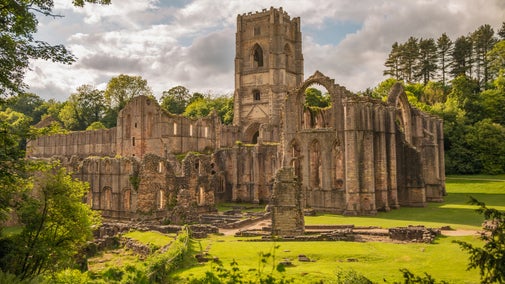The Terry family business – over 250 years of chocolate
From chemists to chocolatiers, Terry's of York played a crucial role in the city’s heritage. It grew to become a family business in more ways than one, with many employees working with their own family members in the factory, or meeting their spouses at work.
The early years
The business began in 1767 as a small shop close to Bootham Bar in York’s city centre. At that time the owners were William Bayldon and Robert Berry.
Joseph Terry, the chemist
Joseph moved to York in 1813 and served as an apprentice apothecary in Stonegate. He later set up his own chemist shop in Walmgate. In 1823 he married Harriet Atkinson, a relative of Robert Berry. He joined the Berry family business which by that time was in St Helen's Square.
Joseph Terry (the younger), the confectioner
In 1854, Joseph Terry (junior) married Frances Goddard and had three sons, Joseph, Samuel and Thomas (who became Noel's father).
By 1867, the Terry business had 400 items on its price list but only 13 were chocolate – the rest were boiled sweets and confectionary. By now, the business was based by the river at Clementhorpe. In 1890 the business had around 300 employees.
Thomas Terry, the businessman
Thomas, Joseph's son by his first marriage, promoted the business internationally. Sadly, he died in a road traffic accident, leaving Noel without a father.
Noel and Sir Francis Terry, the chocolatiers
Noel and his step-uncle Francis became joint managing directors in 1923. They began to transition the business to its Bishopthorpe Road site the following year. Designed by J.E. Wade and featuring a 135ft-high clock, the new factory was finished in 1926.
Noel and Francis led the business through its heyday in the 1920s and 30s, creating the famous Terry's Chocolate Orange and All Gold. Under their leadership, production and revenue almost doubled and by 1937 the company had 2500 employees.
A royal visit
King George VI and Queen Elizabeth visited the Bishopthorpe factory on 19 October 1937. The Royals were shown around the factory, visiting everywhere from the testing laboratories to the production lines. Banners, ribbons and a marching band marked the occasion and hundreds of workers cheered from the sidelines.
The end of an era
In 1963 hotel group Forte – now a multi-billion pound company – took over Terry’s, and Noel was offered a directorship on Forte’s board.
Terry's changed hands again in 1978, to Colgate Palmolive, and then in 1982 to United Biscuits.
Kraft bought the company in 1993 for £220 million. Production moved to Eastern Europe in the early 2000s and the York factory closed in 2005 with the loss of 317 jobs.
When Peter heard that Kraft were closing the York factory, he called it ’the saddest day’ of his life and remarked, ‘So Terry’s of York will be no more…’















